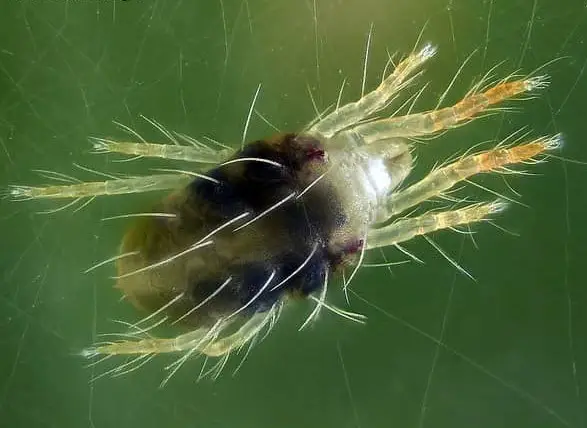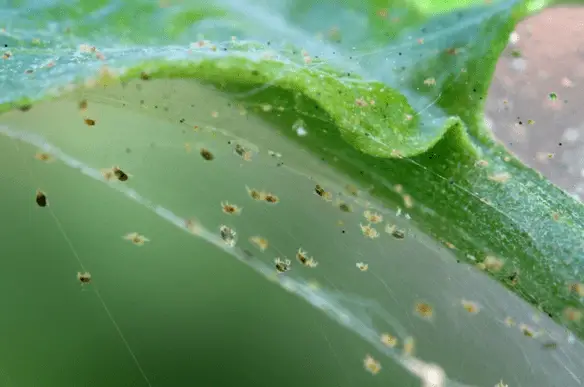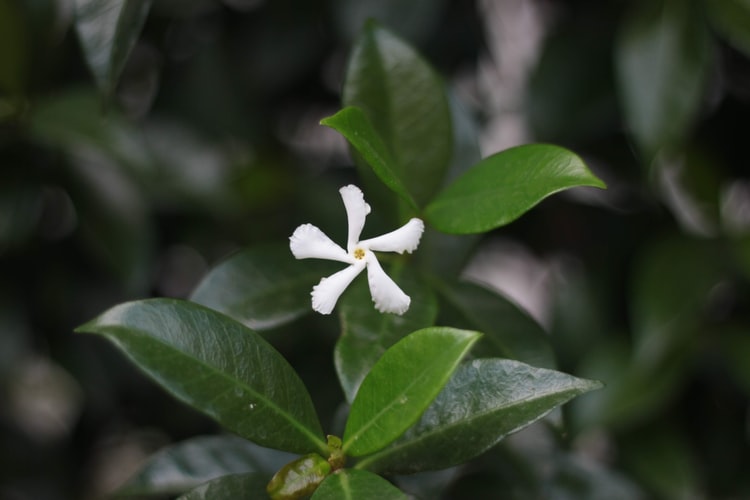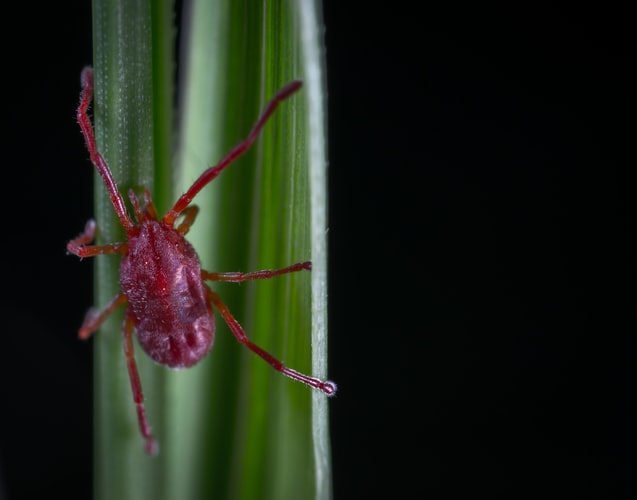Jasmine goes through different changes during the four seasons. Some changes are harmless to the plants and others can vital. The color of the leaves can tell so much about the condition of any plant out there, and jasmine is one of them. Jasmine leaves can turn either black, brown, yellow, red, or purple. Each color indicates a different sickness.
In this article, I will introduce to you the causes of brown leaves in jasmine and how to treat and prevent them.
Table of Content
Causes of Brown Jasmine Leaves
1. Fungal Disease
Jasmine can get infected by different kinds of fungal diseases, one of them being brown leaf spots. This fungal disease mainly damages the leaves of jasmine, causing brown spots on the leaves at the initial stage. And then gradually, it spreads to its surroundings forming large irregular spots all over the plant. The diseased parts will appear thin, the color is yellowish-brown, and the edges are shrunk.
The disease usually appears on the leaves in July or August. Leaf spot is particularly prevalent in cool weather with frequent light rains or high humidity.
Fine lines and small black grains gradually appear in the later disease spots, which can seriously cause the plants to wither and look dead. If you don’t fight this fungal disease in time, it will continue to live in the jasmine forever as it can even survive the winter.

2. Overwatering
During the growth process of your jasmine, it is necessary to have a watering schedule so that you can water your plant in time to keep the soil moist. However, you need to be careful about the amount of water you use, otherwise, the roots will rot and will not allow the plant to breathe anymore.
Additionally, root rot will not allow the plant to absorb and utilize water and nutrients. This will create poor conditions for the plant to grow and leads to browning or yellowing of the leaves.
3. Cold Weather
Jasmines do not tolerate low temperatures below 41°F (5° C). Usually, in winter, jasmines enter a dormant phase when the temperature is around 50°F (10°C) which is normal and tolerated by the plant. However, if the temperatures go below 41°F the plant will experience frostbite.
The extremely low degree leads to brown spots on the leaves. You will also notice that the leaves will shrink and some of them drop. Generally, frost is not deadly to jasmine. So you don’t have to worry much, you can just trim off the brown leaves and new ones will grow.
4. Soil Discomfort
The cause of brown leaves in jasmine can be the soil sometimes. Jasmine prefers slightly acidic soil. If the soil is severely used during planting, the growth process of your jasmine will be affected. Thus, the leaves will turn from green to brown. In some cases, the leaves drop.
5. Improper Fertilization
- Excessive Fertilization
Jasmines need to be fed once in a while. However, if you apply fertilizers excessively for a long time, or use large doses, it will cause the fertilizer to accumulate in the soil which will result in the burn of the root system.
At this point, the leaves will become brown and fall off.
- Insufficient Fertilization.
When the pots are not changed for many years, the nutrients in the soil decrease, and the leaves turn either yellow or brown. Jasmine likes to be fertilized, so it needs to change the pot every spring.
6. Ventilation
For potted jasmine, the maintenance of the environment is also more important. If the environment is not ventilated and has high temperature and high humidity, it will create conditions for the pathogenic bacteria, as it is easy to encounter an invasion of bacteria.
In summer, the weather is hot and humid, and jasmine is a plant that needs a lot of water. Once it is watered too much but the ventilation is poor, it will be prone to pests and diseases.
How to treat brown leaves in jasmine
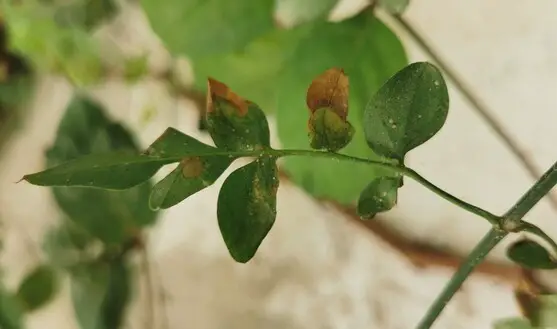
1. brown spot fungal disease
- Cut off diseased leaves in time and destroy them.
- Apply less nitrogen fertilizer and increase phosphorus and potassium fertilizer.
- At the beginning of the disease, use a fungicidal spray once every 7-10 days. (Please follow the instructions of the product you use carefully as each product is different from the other).
2. overwatering
- Change the potting soil by removing the plant to a new pot (if your jasmine is potted of course)
- If your jasmine is planted in the ground, stop watering it for a couple of weeks until the soil is completely dry.
- Start planning a watering schedule for your jasmine.
Related Article: When & How to Replant Jasmine
3. cold weather
Move the plant to a warm and sunny place. However, note that you need to move it gradually. That means do not expose your jasmine to direct sun for long hours. For the first week, allow your jasmine to sit under the sun for about 2-3 hours maximum, and then you can move it to a sunnier place.
4. soil discomfort
Test the ph level of your soil first and then react accordingly to the results. As I mentioned earlier, Jasmine prefers slightly acidic soil. If your soil happens to be salinized or alkaline soil, consider changing the soil.
5. improper fertilization
- If your plant is suffering from overfertilization, stop using fertilizer on your plant for a while or change the soil if possible. And then make a schedule to manage the feeding process of your Jasmine properly.
- However, if your plant is suffering from insufficient fertilization, it is recommended that you use more phosphorus and potassium fertilizers to increase the plant’s resistance to pests and diseases. This will enhance the growth rate of the plant and your jasmine can spend the summer safely and robustly.
6. Ventilation
In summer, we need to ventilate our plants and keep the air in a state of circulation all year round, so that the bacteria will not be easy to multiply.
Conclusion
As long as you take good care of it, I believe that your jasmine will be beautiful and full of fragrance.
During the growth period of your jasmine, you notice there are brown spots on the leaves, it may be due to overwatering. You should get more sunlight and ventilation, reduce the frequency of watering, and then cut off the brown spots on the leaves.
If your plant happens to be very thick, lose some leaves to make a gap between them to be able to breathe. Jasmine likes acidic soil, and you can also apply a little phosphorus and potassium fertilizer, which may improve.

